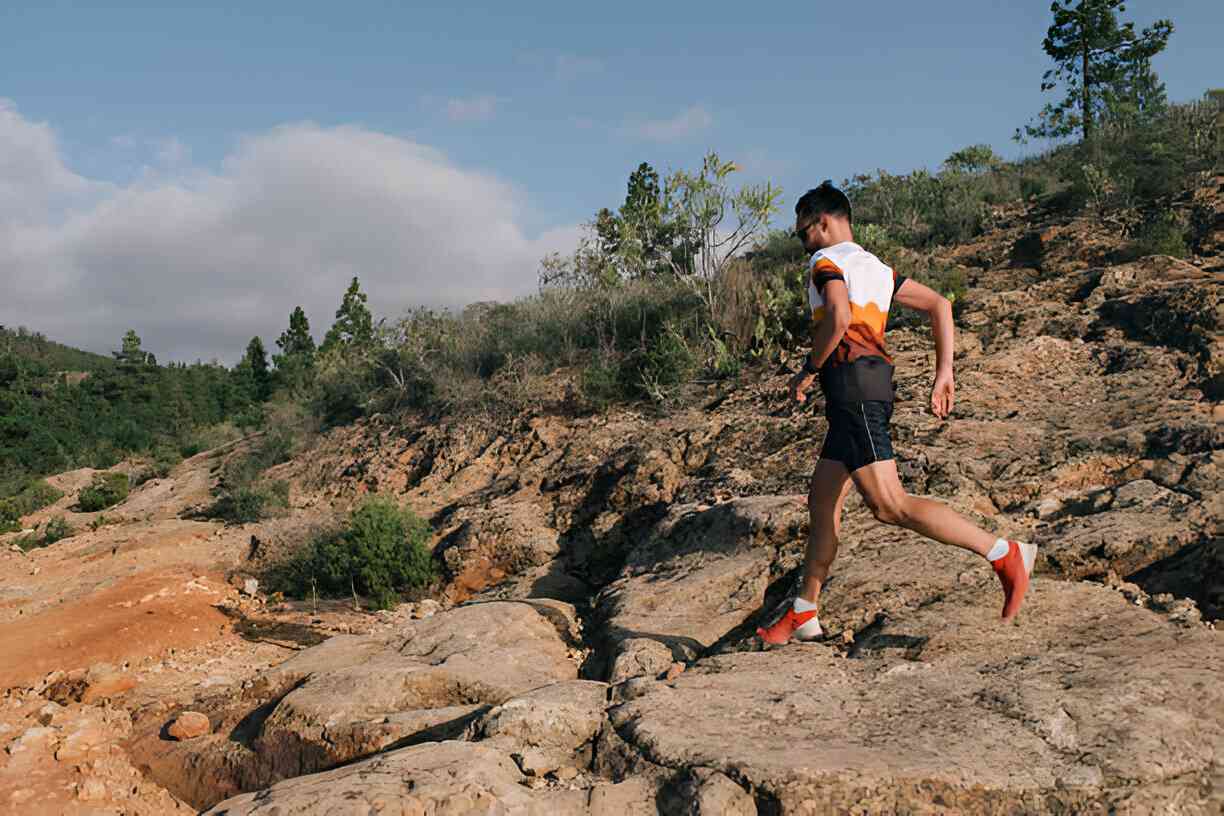Trail running safety tips is a very exciting way to experience nature and get fantastic cardio; however, it brings its own set of challenges and risks. From the first-timers to the more experienced ones, safety needs to be considered number one on any running trails. We are going to talk about some comprehensive guidelines on trail running safety that make your adventures natively enjoyable and safe.
Introduction
Planning on hitting the trails but are worried about the potential dangers? While a mix of adrenaline and serenity from trail running is incomparable, one needs to be prepared for anything. I know staying safe while out there is at the top of your list—and mine too—when it comes to trail running experience. This article Identifies some of the must-knows about safety when it comes to trail running, with guidelines to follow on what and what not to do in order to ensure fewer injuries while one is outdoors running.
What You Will Need (Trail Running Safety Tips)
Cushion trail running requires the right gear and knowledge before you hit your trails. Here is a list of essentials:
Proper Footwear
- A good pair of trail running shoes with great grip and adequate support.
- Alternatives: Road running shoes (not recommended on very technical trails).
Hydration Pack or Bottle
- A hydration vest or handheld water bottle.
- Alternatives: Waist belt with water bottles.
Navigation Tools
- A GPS watch or smartphone with the routes of the trail mapped out.
- Alternatives: Physical map and compass.
Safety Gear
- Whistle, first-aid kit, multi-tool.
- Options: Space blanket, hiking staff.
Clothing
- Clothing that facilitates moisture transfer and weather conditions.
- Alternatives: Adjustable layers to allow temperature control.
Communication Device
- A fully charged mobile phone or satellite communicator.
- Alternatives: Flares or PLB.

Step-by-Step Instructions
Step 1: Plan Your Route
Planning is the first and foremost step toward ensuring your safety on the trail. Use apps like AllTrails or Gaia GPS to find trails that suit your fitness and experience level, research the trail, and know the recent conditions of the trail before heading out, and download it for offline use.
Pro Tip: Always let someone know your route and when you plan to return. That way, in case of not returning according to plan, someone can contact search authorities.
Step 2: Check the Weather
If you are outdoors in the mountains, weather conditions can often change extremely fast. Always check the weather forecast before you head out and be prepared for unexpected weather changes. Pack extra clothing and gear in case it rains or in cold weather.
Pro Tip: Do not run in major weather conditions, such as thunderstorms or heavy snow.
Step 3: Hydrate and Fuel Properly
Dehydration and a lack of energy are serious issues on the trail. Carry enough water and snacks to keep you going for the length of time you will be running. Consider replacing lost minerals through sweating with the use of electrolyte tablets.
Pro Tip: Drink small amounts of water regularly instead of when you feel thirsty.
Step 4: Dress Appropriately
Wearing the right gear can very much make or break your trail running experience. Quality shoes, moisture-wicking apparel, and a lightweight jacket in case the weather instructs are a must.
Pro Tip: Break in new shoes by doing short runs to avoid blisters and uncomfortable feelings when you really want to go for a longer run.
Step 5: Keep Your Wits About You
The process of trail running is one that requires absolute awareness of one’s surroundings. Be observant to loose rocks, trees, and other obstacles on the way that may make you trip or fall. Listen and assimilate what your environment gives off, in order to be aware of any wildlife.
Pro Tip: If you find wildlife, back off slowly and keep your calm. Do not run or make sudden movements.
Step 6: Navigation Tools
One of the very common risks associated with trail running is becoming lost. Run with a GPS device or a smartphone that has offline maps. Be familiar with trail markers and check your position against them periodically.
Pro Tip: Master the simple navigation skills of reading a map and using a compass so you’re prepared if your electronic devices go south.
Step 7 Run with a Buddy
Enlist a running partner to drastically improve your safety. In case of trouble, someone will be there to help you out. If you would rather run solo, consider joining a local trail running group or club.
Pro Tip: Run with an app that has live tracking so others can see where you are in real time.
Step 8: Know Your Limits
One of the thrills of running the trails is that it pushes one’s limits, but it’s overwritten with the importance of knowing them. Avoid trying to do trails that are too technical for your skill level. If you’re feeling tired or sick, take a break or turn back.
Pro Tip: Gradually increase the difficulty and distance of trail running to allow yourself time to safely build up your endurance and skills.
Conclusion
Trail running is the easiest and most amazing way to connect with nature and cheat on your limits while ensuring safety first. Here are some really simple tips regarding trail running safety that will help in minimizing risks and maximizing the fun: Did you find these tips helpful? Please share in the comments below and let me know some of your favorite safety tips. If you are a runner who enjoyed this post, share it forward with fellow trail runners. Stay safe, and happy running!
Remember, trails await, but it’s up to you to be prepared and able to use them safely.








